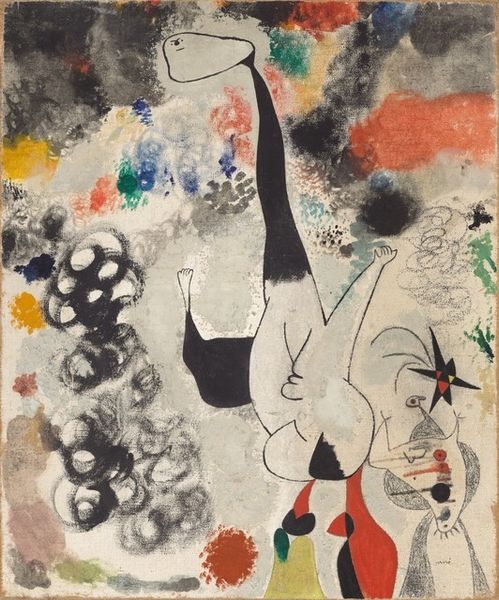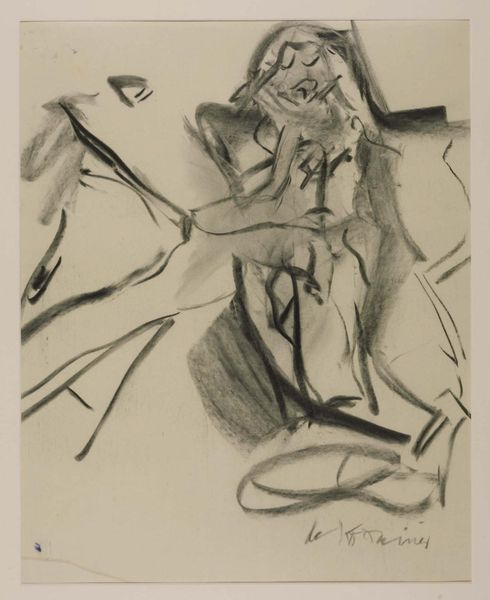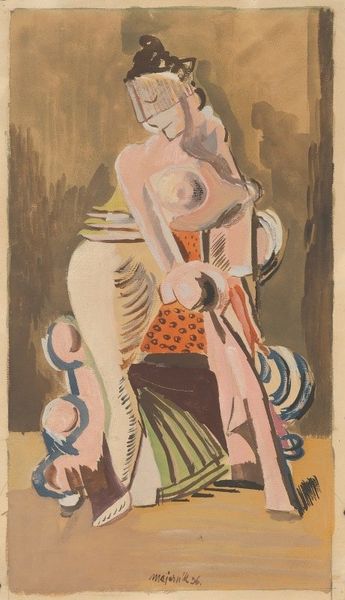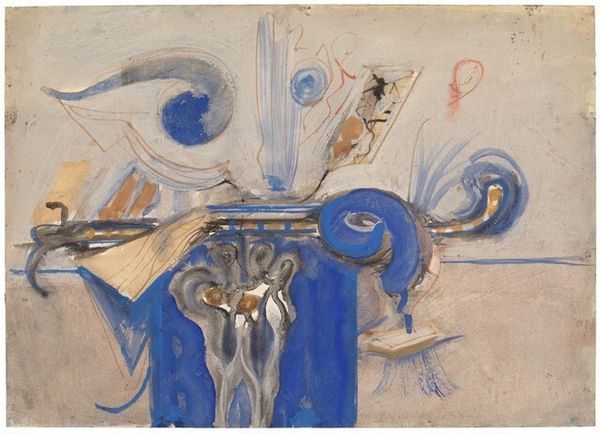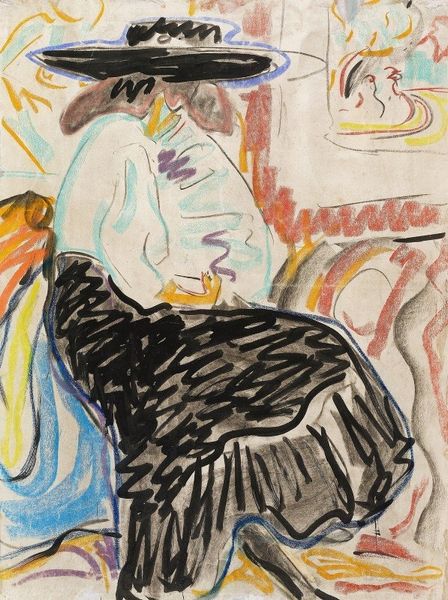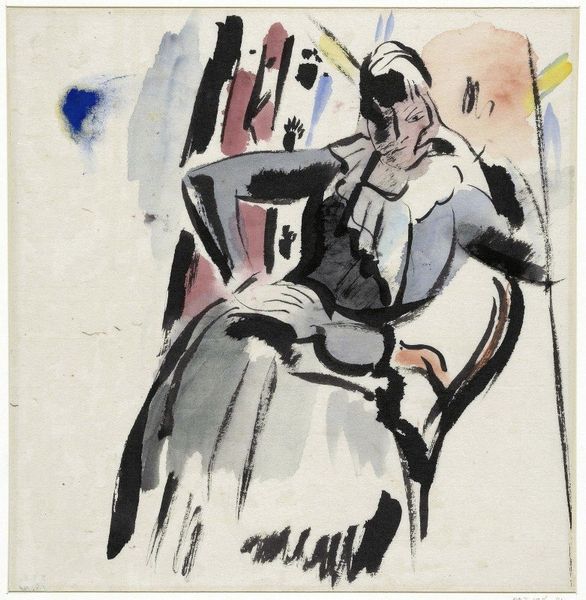
drawing, painting, watercolor
#
drawing
#
abstract painting
#
painting
#
watercolor
#
abstraction
#
modernism
Copyright: National Gallery of Art: CC0 1.0
Mark Rothko created this abstract composition with ink and watercolor, crafting a powerful, albeit ambiguous scene. At its core, a serpentine form dominates, a motif deeply rooted in the human psyche. The serpent, historically, has been a symbol of duality—life and death, healing and poison. This twisting figure, reminiscent of ancient depictions of the ouroboros, hints at the cyclical nature of existence. Observe how its sinuous shape contrasts with the rigid, horizontal lines beneath, creating a visual tension that engages our subconscious understanding of order versus chaos. From the biblical serpent of temptation to the healing caduceus, this symbol carries collective memories. Here, Rothko strips away explicit narrative, leaving us with the raw emotional energy of the symbol itself. This primal form strikes a chord within us, resonating with deeply ingrained fears and fascinations. Rothko masterfully taps into this visual vocabulary, compelling us to confront the echoes of human experience. The serpent's journey through art and culture is a testament to its enduring power, continually reinventing itself to reflect our evolving anxieties and aspirations.
Comments
No comments
Be the first to comment and join the conversation on the ultimate creative platform.
